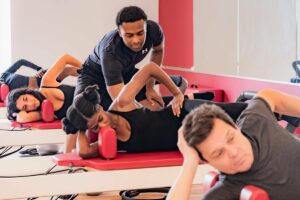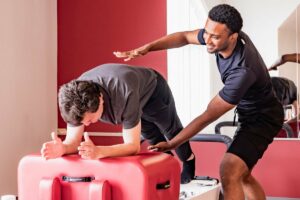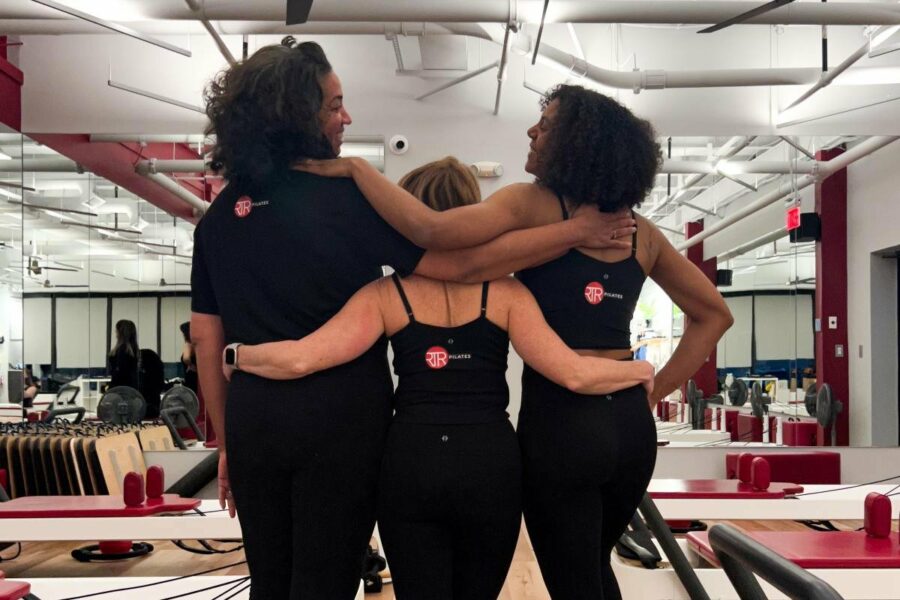 Pilates is one of the most popular exercise options available, with more than 12 million people describing themselves as enthusiasts of the hobby. With annual surges in participation, it is easy to wonder why this activity is garnering so much attention. To understand the enthusiasm toward this exercise, which has become a universal fitness staple, you must first understand the origins of Pilates for men.
Pilates is one of the most popular exercise options available, with more than 12 million people describing themselves as enthusiasts of the hobby. With annual surges in participation, it is easy to wonder why this activity is garnering so much attention. To understand the enthusiasm toward this exercise, which has become a universal fitness staple, you must first understand the origins of Pilates for men.
It may surprise you that Pilates was not created to help people lose weight or stay fit! Instead, the creator of Pilates crafted its movements and goals with specific categories of people in mind, such as soldiers and boxers.
Here is a quick history of the evolution of Pilates, showing how a workout that started for male boxers and soldiers quickly grew to become a global phenomenon.
The Origin of Pilates
Pilates first came into existence as the brainchild of Joseph Pilates, a teacher focused on athletic and “physical” culture. Throughout his childhood in the 1880s, Joseph was experiencing increasingly severe muscle weakness and a lack of flexibility as a result of numerous illnesses.
After being seized during World War I and placed into a prisoner camp, Pilates became the leader of the daily exercise regimens practiced by the camp’s 20,000+ population. Here, he truly began to develop his concepts of physical wellness grounded in improving physical dysfunction rather than “bulking up.”
The Evolution of Pilates for Men Over Time
Once the war ended, Pilates transferred the knowledge and skills he gained in prison to new work as a boxer trainer. Alongside manager Arthur Buelow, Pilates supported boxer Max Schmeling’s physical development, and he became the world’s heavyweight champion in 1930.
This increasing fame drew the German military to Pilates’ and they asked him to help train their police. However, unwilling to cooperate with the growing signals of Germany’s ramp-up to another war, Pilates moved to America to continue developing a new idea: the reformer machine.
His brother helped him refine the device by adding springs and straps to mimic popular exercises, such as rowing. Pilates gradually created a full repertoire of exercises meant to be performed on the reformer, and the concept of Pilates (or, at the time, “Contrology”) as a widespread phenomenon was born.
The Medical Era
People were starting to catch on to this new exercise option, and it didn’t take long for the news to spread. New York City dancers were eager to share the news that Pilates’ approach to fitness was able to “cure” their injuries.
Pilates was enthusiastic about the progress being made and sought greater attention from the medical community to legitimize his results. However, few medical outlets would consider Pilates as anything more than a fad or hobby.
Thankfully, this attitude did not persist. While Pilates passed away in 1967, before he could see the full fruits of his efforts, orthopedists adopted Pilates as a rehabilitative technique in 1983. From there, medical studies began to commence in earnest.
Pilates Today
In the 40 years since Pilates saw its surge in medical awareness, it has grown as a rehabilitation tool and a hobby that encourages flexibility, stability, and a strong body and mind. Studies have repeatedly shown that Pilates decreases pain, keeps the spine stable to prevent posture-related difficulties, improves balance to reduce the risk of injury or death in older adults, and helps people positively change their views on their health.
Pilates studios have begun opening in cities worldwide to keep up with the increasing demand. This is no longer a workout for male boxers and soldiers; it is a community of people of all ages, genders, cultures, and abilities who want to improve their well-being, strengthen their bodies, and invest in their health for the long term.
Pilates is expected to continue its significant growth patterns, with millions of participants adding to the number of enthusiasts yearly!
Try Pilates to See the Benefits for Yourself
 Wondering what all the excitement is about? Pilates is a great way to increase your flexibility, improve your muscle strength, keep your body stable, and improve balance so you can get the most out of every day.
Wondering what all the excitement is about? Pilates is a great way to increase your flexibility, improve your muscle strength, keep your body stable, and improve balance so you can get the most out of every day.
The instructors at RTR Pilates make reformer Pilates accessible, even if you’ve never seen a reformer before. Contact RTR Pilates today to sign up for a beginner class and reap the benefits of this universal fitness option!



